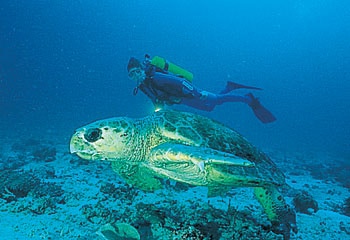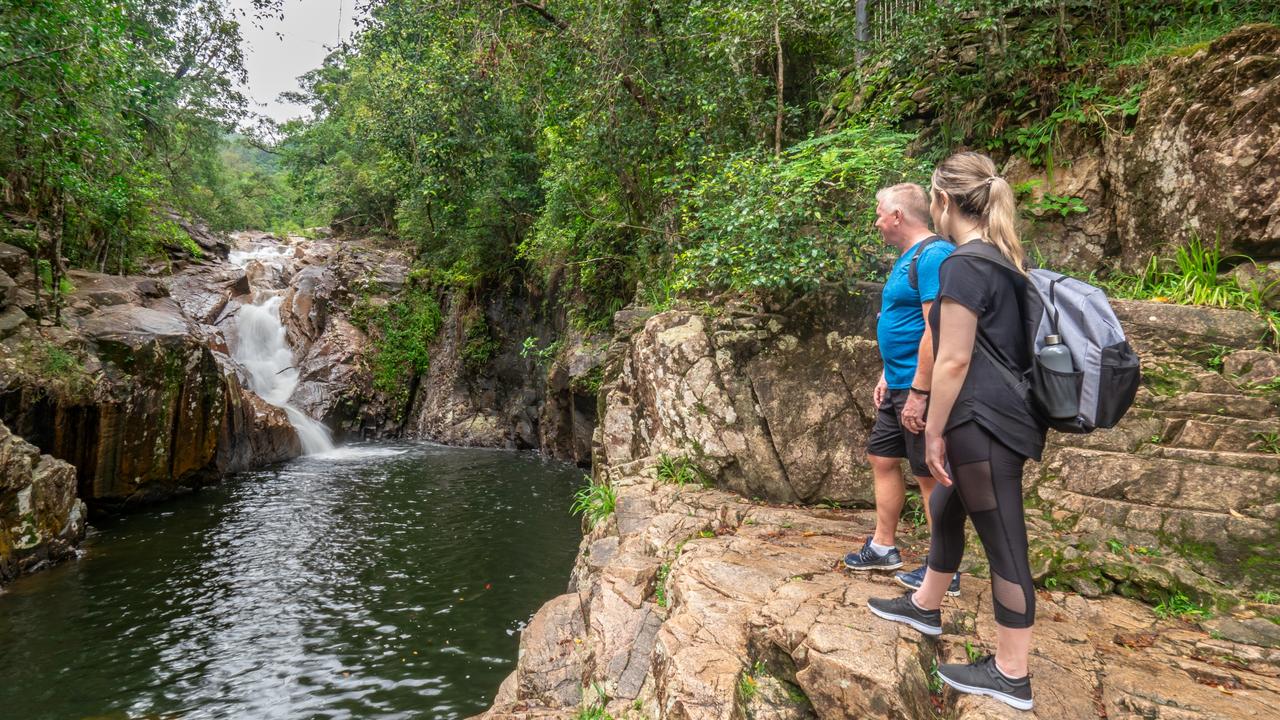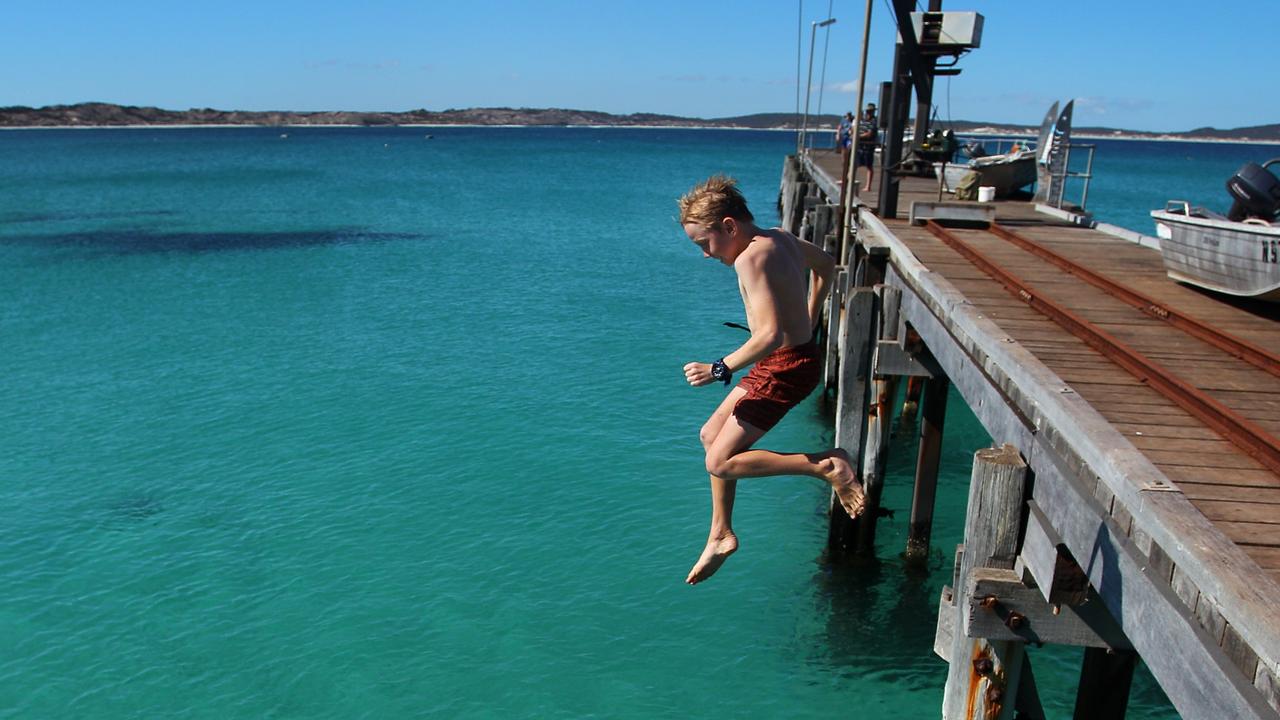Flipping out for Heron Island
ISLAND life is easy on Heron Island where the birds are chirpy and the turtles take it slow, writes Tamara Mclean after a helicopter ride in.

HOVERING low over the reef, our pilot tilts the chopper on its side so we can peer straight down in the candy green shallows.
"Wow, watch him go. What a beauty!" he says of a giant manta ray sashaying through the water close behind a school of sparkly pink fish. "He'd be the width of a car, I reckon."
Not far behind are four smaller ones, "naughty teenagers" we're told, travelling in convoy in another direction, while a couple of baby lemon sharks flick their tails on the outskirts of the lagoon.
"And we'll be seeing the whales coming through over that way soon," he says, pointing into the deep gulf of water closer to the mainland.
We haven't even reached our island retreat and already this weekend escape on the Queensland coast is proving exceptional.
Just moments earlier we'd lifted up and out of the port town of Gladstone, 500km north of Brisbane, and headed east over the southern tip of the Great Barrier Reef towards the Capricorn group of islands.
Most are just miniature smudges of sand barely visible out the helicopter window, but ahead we spy a larger, Robinson Crusoesque isle, complete with an idyllic set of palm trees, sweeping white shoreline and shipwreck for good measure.
Heron Island, our home for the next two nights, immediately appeals as a resort getaway without pretence - comfortable, casual and quiet, well, except for the gaggle of noisy egrets and terns in the trees above.
It's clear why Heron has carved a reputation as a natural escape. It's understated, with no buildings poking above the tree line, and the wildlife rules the roost. As a home for seven resident bird species, a stop-off for nine more and port of call for a dozen "day-trippers", the 17ha are a-hum with the sounds of chirping and squawking.
"Not to mention the vagrants," says the island's nature guide, Kylie Mirams, who had recently spotted a lone purple-breasted swamp hen here to nest. "We get any manner of odd birds showing up out of nowhere to stay for the afternoon, or maybe a couple of years."
The island's star attractions are the green and loggerhead turtles that nest from October to March and can be seen scuttling along the beach after sunset.
Almost a century ago Heron was home to a commercial turtle factory which "fortunately failed", as stated in an island brochure, and these days the sea creatures are its most celebrated visitor, with hundreds showing up each year. The tens of thousands of wildlife occupants make the 300 human guests feel very outnumbered, and that's the island's charm.
Accommodation ranges from basic hotel-style rooms to free-standing waterfront chalets with views over the trees straight out to sea.
There are no televisions, phones or even keys to remind you of big-city living, and forget mobile phone coverage. There's no air-con for cool or double-glazing for peace and quiet, but a fan and ear plugs (to block out the early morning bird calls) more than do the trick. This is a real escape into nature without the bells and whistles, and it's better for it.
And island life is easy. There's a big buffet on offer three times a day and a store to get kitted up for diving at one of the 30 spectacular sites just a short boat ride away. Or you can just go it alone to swim, snorkel, play tennis or roam the island in search of birdlife. There is one serious luxury in which to indulge - a spa house offering facials, massages and anti-ageing therapies in his and hers packages for the many couples that come here.
There's also a bar and pool perfect for drinking cocktails next to, as well as live music some evenings to put a buzz in the warm air.
Sitting back on a recliner watching the sunset, drink in hand, all you'll wish for is just a little more time to while away before the helicopter comes back to collect you.
The writer was a guest of Tourism Queensland and Australian Helicopters.



